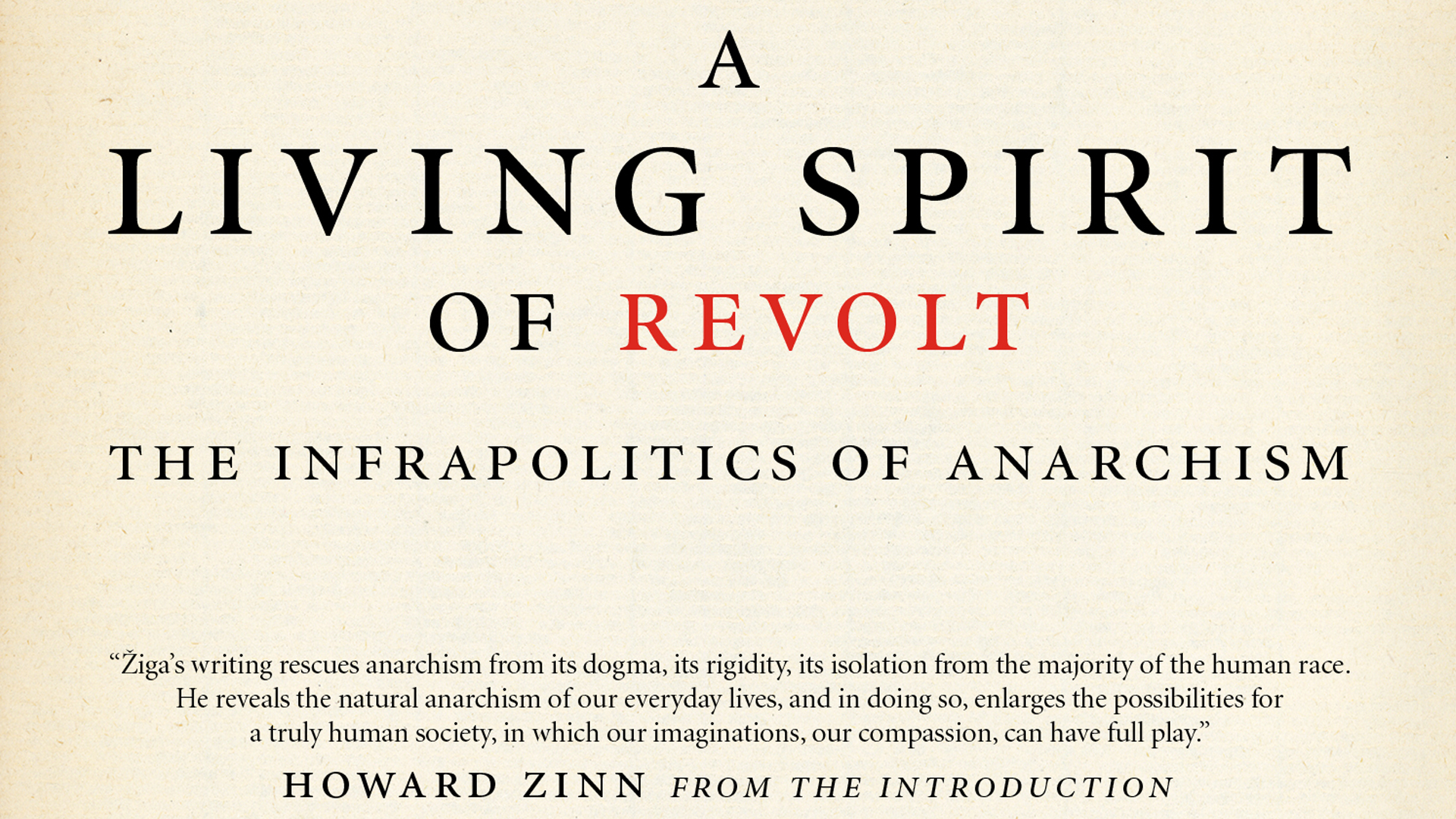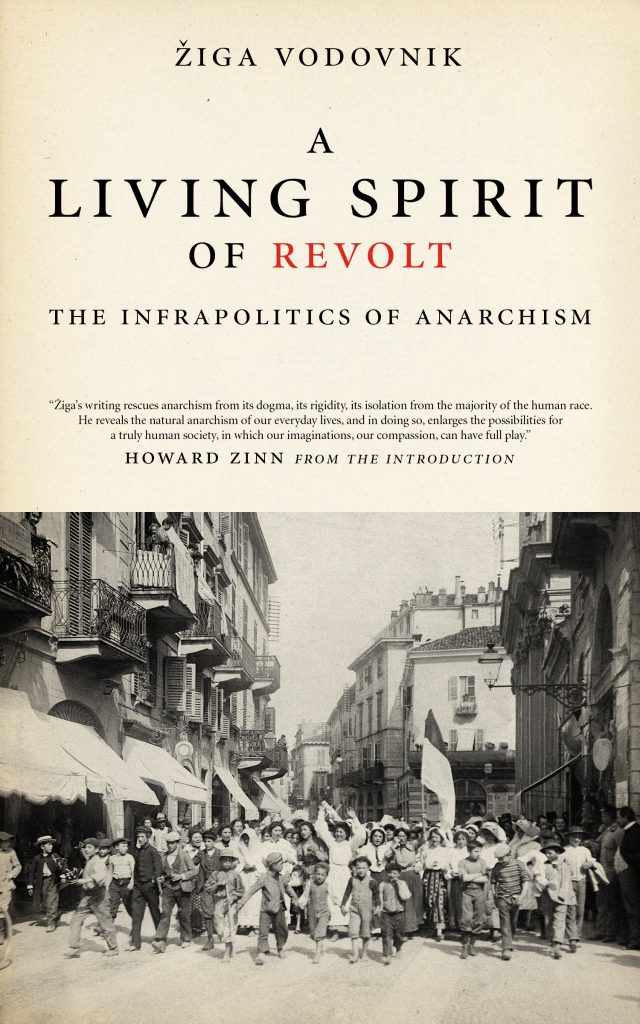by John L Murphy
Slugger O’toole
May 4th, 2014
How can anarchism get beyond marginalized impacts, finicky theorists, and squabbling activists? A Slovenian political scientist, Žiga Vodovnik, offers suggestions forward. This concise survey occupies a space, if pre-Occupy (despite a 2013 copyright for the English translation this offers no updates but the late Howard Zinn, who died in 2010, provides an encouraging introduction), where an overview of anarchism’s philosophies and history segues into a connection to not only Continental and British thinkers, but its overlooked, attenuated American Transcendental roots.
For, Vodovnik argues that–given this idea itself did not fully emerge until the late 19th century–the counterculture of the 1960s revived it looking back not to Godwin, Bakunin, or Benjamin Tucker so much as Emerson, Thoreau, and Whitman. They ally in their attitude against ‘foolish consistency’ for an approach allowing contradictions to advance equality (as does socialism) along with freedom (as does liberalism).
Vodovnik supports a flexible nature for anarchism. He grounds it in the ‘absence of a leader or ruler’ as its meaning, and its anti-authoritarian ethos rather than one that avoids any authority. This key distinction aligns with Dave Neal’s ‘small-a’ methodology rather than a ‘capital-A’ ideology insisting on no overarching plan. As many motivators cited here agree, the spark lies in the ‘infrapolitics’ where ‘seemingly non-political’ or hidden forces seek to undermine unjustly imposed and unfairly distributed power structures, where the majority lack viable options to pursue opportunities to enrich self-fulfillment.
Vodovnik sides with an anti-statist and civil disobedience- charged resistance. Hakim Bey’s ‘Temporary Autonomous Zones’ (TAZ) offer one model where a ‘tendency for actualization of theory’ meets the personal space opened, if for a while, for a ‘liberated zone’ and ‘political laboratory’ that allows real progress ‘outside the boundaries of commodification or spectacle’.
This encouragingly commonsensical attitude links anarchists by name with many more who enter part or all of its many fluid channels, while flowing into, as historian Peter Marshall sees it, a common river.
David Graeber’s post-ideology of Direct Action is here linked to Oaxaca in 2005 and Seattle in 1999, but while this book unfortunately was not updated for Occupy Wall Street and the anti-austerity EU or Tahrir Square protests recently, that anthropologist’s aspiration ‘to reinvent daily life as a whole’ remains relevant. Zinn’s pragmatic revolutionary reform that pushes progress within systems as well as undermining unjust control may be more realistic, Vodovnik suggests. Instead of street theatre or fervent factionalism, fitting this stereotyped strategy into its many vibrant and changing forms appears more practical. There’s some slow spots given this is written by a professor, one wonders how pop culture applies to foster anarchism, and more clarification of how the ‘young Marx’ offered a more liberating version of labor as self-identity could have helped a non-specialist. But, despite a few clunky parts perhaps in translation, this is welcome.
In closing, this handy guide stands in the space between brief pamphlets or Colin Ward’s Anarchism: A Very Short Introduction in Oxford UP’s series and Marshall’s magisterial Demanding the Impossible. PM Press published many of the inquiring texts quoted here, and adding Žiga Vodovnik’s compact treatment will guide the reader to many more books, and even better, piers from which to leap into an arguably the last remaining viable revolutionary current, this free river of human longing.







